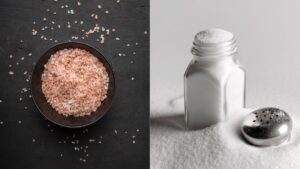Bud Brewer Is Buoyed by Pricier Beer

Beer drinkers are so far stomaching higher prices for their brews.
Budweiser owner
said Thursday it sold more beer at higher prices in the first quarter, helping the world’s biggest brewer report better-than-expected earnings.
How much companies can raise prices without losing customers has become a key question across the consumer-goods industry this year as makers of everything from beer to shampoo seek to offset soaring input costs.
AB InBev’s results are the latest indication that drinkers have been willing to pay up. Rivals
NV,
A/S and
all recently reported higher first-quarter prices and volumes, helped in part by the reopening of bars and restaurants across the U.S. and much of the world.
Other consumer-goods companies like
Nestlé SA
and
Procter & Gamble Co.
have also reported similar growth in volumes and prices, showing that consumers so far have been willing to pay up for a range of everyday items. Several executives, however, have warned that as prices continue to rise, consumers are likely to trade down to cheaper products.
AB InBev reported a 7.8% jump in revenue per hectoliter in the first three months of the year from a year earlier. Despite this, the company said volumes rose 2.8%, helping the brewer log a rise in sales to $13.24 billion, from $12.29 billion a year earlier.
Strong top-line growth allowed AB InBev to offset rising costs from commodity inflation and its supply chain to report a profit on an underlying basis—which strips out currency and one-time impacts—of $1.2 billion, up from $1.1 billion a year earlier.
On a reported basis, profit fell to $95 million from $595 million as the company took a $1.14 billion impairment charge tied to its decision to exit Russia.
In North America—where drinkers have for years been moving away from AB InBev’s two blockbuster brands Bud and Bud Light—the brewer said volumes declined 4.2%. The company has been working to diversify away from these brands in the U.S., investing in Michelob Ultra and spirits-based canned cocktails, which it said performed well.
Volumes also declined in China, with demand hit by Covid-19 lockdowns. Across the rest of the Americas and in Europe, volumes grew.
AB InBev said it expects its earnings before interest, taxes, depreciation and amortization to rise between 4% and 8% for the current year, with revenue increasing by more, driven by both volume and price.
Write to Saabira Chaudhuri at saabira.chaudhuri@wsj.com
Copyright ©2022 Dow Jones & Company, Inc. All Rights Reserved. 87990cbe856818d5eddac44c7b1cdeb8









